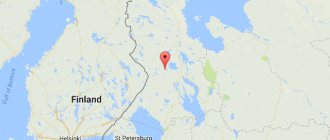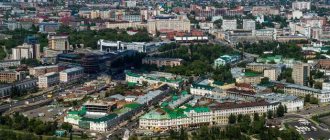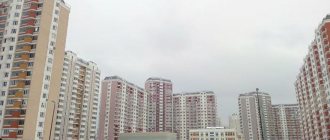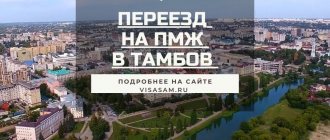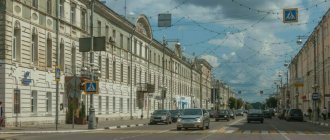In the southern part of Western Siberia, on the two banks of the Tom and Iskitimka rivers, stands Kemerovo city, also capturing part of Kuzbass. It is rightfully considered the administrative center of the Kemerovo region of the same name and is one of the fifty largest and most populous cities in Russia. We can safely call Kemerovo the industrial and cultural center of Siberia.
According to the latest official statistics, more than 558 thousand people live in the city. Since the last century, factories specializing in the coal industry, light industry and food industry enterprises have been operating here. Since the 1990s, entrepreneurship has been developing with might and main.
General information and brief history
The city of Kemerovo, whose population has been growing in recent years, is the center of the Kemerovo agglomeration. A significant industrial, economic, scientific and cultural center, an important transport hub of Siberia is located on the banks of the Tom and Bolshaya Kamyshnaya rivers (in the lower reaches it is called Iskitimka, which is more familiar to city residents) in the northern part of the Kuznetsk coal basin. Historically, the city is famous for its coal mining, but at the moment the chemical industry is also actively developing.
Despite the fact that this particular settlement is the administrative center, the largest in area and the second, if we take into account the population of Kemerovo, Novokuznetsk is listed in terms of the number of residents in the Kemerovo region. This discrepancy between the status of the city, population and area, as locals say, happened due to the fact that in industrial Novokuznetsk the management of large enterprises preferred to work away from their superiors. And since it is easier to move the management apparatus than production facilities, the management, as a result of some political maneuvers, ended up in Kemerovo.
Continuing the theme of the history of the city, an agglomeration began to develop on the site of modern Kemerovo at the beginning of the twentieth century, when two small villages merged into the city of Shcheglov. The settlement was renamed several times during Soviet times. The city received its modern name in 1932.
Crime situation and attractions
One of the factors that interest potential visitors to the city is peace and security. Is it worth coming here? What about children? Will they be able to live peacefully in this city? After all, according to statistics, the district is among the top three in terms of the number of crimes after the Ural and Far Eastern regions. You should be wary of gypsy villages. Stroygorodok also raises concerns. If you avoid these objects, you can live comfortably and peacefully.
When visiting Kemerovo for the first time, you cannot ignore the factory complexes, of which there are a lot. In fact, here you can observe the triumph of human genius. It is especially beautiful to see it at night under the light of the lights. You should definitely visit the monument in memory of the miners of Kuzbass on Krasnaya Gorka.
Further the route should be laid past the sculpture of the Great Martyr Barbara, who became the patroness of miners, and the monument to the discoverer of coal.
If you are traveling with children, then check out the children's railway, and then go to the Museum of Railway Equipment.
Religious people will be interested in visiting the Church of the Holy Trinity, next to which there is a sculpture of the Mother.
In the Zavodskoy district there is a luxurious architectural ensemble - the Znamensky Cathedral.
To take a break from walking through cultural places, you need to satisfy your gastronomic hunger and visit the Zaboy restaurant on Stroiteley Boulevard. This place may not be the most beautiful or romantic, but the name and interior are in a miner’s style. The establishment also pleases with its cuisine, but the prices are far from budget.
Coffee lovers will definitely visit the Travelers coffee shop, an atmospheric and calm establishment that, according to rumors, Ernest Hemingway himself would have approved. The rich coffee list will satisfy the tastes of discerning gourmets, and the modest menu of hot dishes will not leave you hungry. By the way, the prices are very reasonable and affordable.
Population dynamics
The population of Kemerovo in 2016 was just over 553 thousand people. As for the dynamics of the number of city residents, since 1926 the number of Kemerovo residents has increased rapidly until the 1990s. Thus, the first statistical data (1926) indicate 22 thousand inhabitants; in 1931, fifty and a half thousand people already lived in the city, and by the beginning of World War II - almost three times as many.
The hardships and deprivations of wartime did not affect the demography in Kemerovo in any significant way. The city was located in the rear, and the main task of the population at that time was to provide the front with everything necessary. More than 70 enterprises were evacuated from other settlements and operated in Kemerovo. Coal production increased in those years, and metallurgy produced such an amount of armor that was enough for forty thousand tanks, more than one hundred thousand shells and forty-five thousand aircraft. Thus, all the human losses of the Great Patriotic War in Kemerovo were made up for by newly arrived workers and children who were evacuated away from the front line.
By 1956, the population of the city of Kemerovo was 240 thousand people. Employment opportunities attracted young professionals to the locality, who later stayed and started families. So, in 1982, the city already had almost half a million residents.
With the collapse of the Soviet Union, the birth rate decreased, and the population growth rate, accordingly, too. If during perestroika and the first years of the last decade of the twentieth century the population did not increase, but did not fall, then starting from 1992, positive dynamics were noted only in 1997, and then in 2003. The population of the city of Kemerovo has been steadily increasing since 2010, when the demographic situation in the country as a whole somewhat normalized.
Geographical features
Where is Kemerovo located? The city of Kemerovo is located in the south of Siberia, at a distance of 2987 km (3601 by road) from Moscow. The relief is hilly and ridged, and the landscape zone is Siberian forest-steppe. The city is located along the banks of the river. Tom, being in the zone of its middle course. There are road and railway bridges across the river.
Time in Kemerovo is 4 hours ahead of Moscow. The climate corresponds to where Kemerovo is located. It is continental and quite cold. Winter is harsh and long, lasting from late October to early to mid-April. Summer is warm and humid, and some days can be very hot. At the same time, sudden cold snaps sometimes occur, including frosts and snowfalls.
The annual precipitation is 505 mm. The summer maximum of precipitation is clearly expressed, and the minimum occurs in February and March.
National composition of city residents
Today, the majority of the residents are Russians, who account for almost 95% of the total number of citizens living in the city. A certain percentage is occupied by Tatars, Ukrainians and Armenians. Other nationalities make up only 2.3% of the population.
In the Kemerovo region as a whole, the situation with the national composition of the population is somewhat different. Thus, Rosstat presents the following data as of 2010:
- Russians (91%);
- Tatars (1.46%);
- Germans (0.84%);
- Ukrainians (0.8%);
- Shors are a Turkic-speaking people, the total number of which is about 14 thousand people (0.39%);
- followed by Armenians, Chuvashs, Azerbaijanis, Belarusians and representatives of other nationalities.
KEMEROVO
Kemerovo. View of the central part of the city. Photo by Yu. V. Sergeev
KEMEROVO, city in Russia, adm. center of Kemerovo region Us. 520.0 thousand people (2008), the second most populous city in the region (after Novokuznetsk). Located in the north parts of the region, in the foothills of the Kuznetsk Alatau, on the river. Tom, at the confluence of the river. Iskitim. Railway station. Road junction. Intl. airport.
The oldest settlement on modern territory. K. was located on the right bank of the river. Tom village Shcheglova (now Krasnoyarsk; first mentioned in 1701 by S. U. Remezov on the “Drawing of the Tomsk City”, was named after the Shcheglov peasants). Near it in 1721, ore explorer M. Volkov for the first time in Kuzbass found a “combustible stone” (coal), but in the 18th century. the discovery did not receive practical attention. applications. By 1734, not far from the village. Shcheglov, the villages of Kemerovo (later Kemerovo; named after the first settler, peasant A. Kemirov) and Kur-Iskitim (Pleshki); between 1734 and 1759 - the villages of Evseeva and Borovaya, and on the left bank of the river. Tom - village Ust-Iskitimskaya, or Shcheglova (the name of the second village of Shcheglova is also associated with the Shcheglova peasant family; in 1847 it was transformed into the village of Ust-Iskitimskoye, or Shcheglovo, which became the largest of the surrounding settlements). In 1759, all settlements were assigned to the Kolyvan-Voskresensky mountain district. In 1825–27, the Shcheglovskoye coal deposit (named after the first village of Shcheglov) was studied geologically. batch, first described by engineer-captain N.A. Sokolovsky in 1842 in the Mining Journal. All R. 19th century on the left bank of the river. Tom village arose. Davydova (Ishanova).
In 1907, on the basis of the Shcheglovsky coal deposit, the Kemerovo mine was founded, which in 1912 became one of the enterprises of the Kuznetsk Coal Mines JSC (Kopikuz). Since 1913, Kopikuz carried out work on the construction of railways. the Yurga - Topki - Proektnaya branch, which departed from the Trans-Siberian Railway to the Kolchuginsky mine Kopikuza (100 km from the village of Shcheglovo), and the Topki - Kemerovo branch (opened in 1916). In 1915 the chapter was founded. mine of the Kemerovo mine - "Central". After Oct. Revolution of 1917 The Council of Workers' Deputies of the Kemerovo Mine was the first in Kuzbass to take power into its own hands [11(24).11.1917]. By decision of the Council of People's Commissars dated April 21, 1918, Shcheglovsky u., village was formed. Shcheglovo was renamed Shcheglovsk, which became the district center of Tomsk province. (until 1924; then a city without a district for some time).
Since June 1918, with the development of the action of the Czechoslovak Corps and the capture of Shcheglovsk by its units, power in the city changed frequently: from representatives of the Western Siberian Commissariat it passed at the end of June to the Provisional Siberian Government, which transferred on November 3. powers of the Ufa Directory, and November 18. The power of the “Omsk government” was established. 12/24/1919 Shcheglovsk was occupied by units of the 5th Army of the Red Army during the Eastern Front offensive of 1919–1920. By decision of the STO dated October 21, 1921, management of the Kemerovo mine was transferred to the international. Autonomous industrial colony (AIK) "Kuzbass". Foreign specialists reconstructed and electrified mines and residential buildings, completed and put into operation coke plants. plant (1924; construction began in 1915 by Kopikuz). In 1927, AIC was transformed into Sov. Trust "Kuzbassugol" subordinate to the Supreme Economic Council.
The city was the center of the Kuznetsk region. Siberian Territory (1926–30), regional center of the West Siberian Territory (1930–1937), Novosibirsk region. (1937–43). In 1928, Shcheglovsk included the village. Kemerovo (gave its name to the city), which received the status of a workers’ village (Jan. 23), art. Kemerovo, village Chemical factory and village Kemerovo mine. 27.3.1932 Shcheglovsk was renamed K. In the 1930s. new mines and industrial facilities were built. enterprises.
In 1941, the equipment of the Donetsk, Konstantinovsky, Kramatorsk, Kharkov and other coke-chemical plants was evacuated to the operating enterprises of K. plants, Dneprodzerzhinsky, Stalingrad, Lisichansky and other nitrogen fertilizer plants, as well as equipment from Leningrad. military horseshoe plant No. 1, Gorlovka plant No. 64 of the People's Commissariat of Ammunition, etc. The defense enterprises of Kazakhstan produced gunpowder and explosives (plant No. 392, since 1980 PO Progress), and shell casings (plant No. 606). In 1941, the 1248th Infantry was formed in Kazakhstan. Regiment of the 376th Kuzbass Infantry. division, in 1942 - volunteer. regiment included in the 150th Infantry. volunteer division. Since 1943, K. has been the center of the Kemerovo region.
Kemerovo. House of the mine manager (1916; now part of the Krasnaya Gorka Museum-Reserve). Photo by A. G. Vyazemtseva
The original buildings of the coking plant have been preserved. plant (project of the Olivier Piet company, 1913): coal preparation shop, cable car supports (all 1915–1916). Among the oldest buildings in the city is a tree. house of the Gubkins (2nd half of the 19th century); pier (1915); building ch. mine offices (Art Nouveau style, 1916); house of the mine manager (1916, the first stone residential building; now part of the Krasnaya Gorka Museum-Reserve). The buildings of the 1920s have been preserved, reflecting the idea of a “garden city”: semi-detached “sausage houses”, houses for specialists, a school (1926, architect J.B. van Loghem). Monument to Constructivism – Palace of Labor (1927, architect A.D. Kryachkov). In the style of neoclassicism - development of areas of the 1930s-50s: the Moscow cinema (1937), City Garden (late 1920s - 1950s), Med. Academy, Polytechnic technical College; buildings built in accordance with the general plan of 1947–51. Administration (architect L.K. Moiseenko), House of Culture of the Kirov District, etc. According to the general plan of 1971 (architect L.S. Grishina and others), the avenue was built. Lenin. Znamensky Cathedral (1989–96), chapel in honor of the icon of the Mother of God “Joy of All Who Sorrow” (1994). In 2006, one of the widest bridges in Siberia (across the Tom River) was put into operation. Monuments: A. S. Pushkin (1954, sculptor M. G. Manizer), V. I. Lenin (1970, sculptor L. E. Kerbel, architects V. N. Datyuk and V. A. Surikov), Friendship of Peoples ( 1977–80, sculptor A.P. Khmelevsky), monument “Memory of the miners of Kuzbass” (2003, sculptor E.I. Neizvestny), memorial to Kuzbass soldiers who died in local wars and armed forces. conflicts (2003, sculptor V.V. Treska).
Kemerovo scientific. Center SB RAS (1990). State universities: Kuzbass technical. University (founded in 1950 as a mining institute, the name has changed; current name and status since 1993), Med. Academy (1956), University of Culture and Arts (1969), Technological. Institute of Food Industry (1972), University (founded in 1974 on the basis of the Pedagogical Institute; the Museum of Archeology and Ethnography of Southern Siberia was created at the University in the 1970s), agricultural . Institute (1976; current status since 2002); branches: St. Petersburg military University of Communications, Tomsk University, Russia. trade and economic University, Siberian University of Physical Culture and Sports and other universities. Libraries: regional scientific named after. V. D. Fedorov (1920; building - 1963, architect V. A. Surikov), center. city named after N.V. Gogol (1951; over 20 branches). Museums: regional - local history (1929), depicted. Arts (1969). Museum-reserve "Krasnaya Gorka" (1992).
In K. there are: Regional Drama Theater named after. A. V. Lunacharsky (1934), Regional Puppet Theater named after. A. Gaidar (1942), State. music Kuzbass Theater named after. A. K. Bobrova (1947; founded in 1944 in Novosibirsk), Theater for children and youth (1991). State Regional Philharmonic of Kuzbass (1954), including the Governor's Symphony. Kuzbass Orchestra (1981), Kuzbass Governor's Chamber Choir (1994), Russian Orchestra. adv. instruments (1990), string quartet “Elegy” (2002). There is a mute organ installed in the Small Hall of the Philharmonic. Sauer (1983). Governor's youth choir “Morning” (1976). Circus (1932). Satellite television and space station. communications "Orbit" (1967, the first in the country). Intl. festivals: cultural festivals “Creativity of Hearts for the World” (since 2000), Orthodox theater “Kuzbass Ark” (since 2003).
Bandy club "Kuzbass" (stadium "Khimik", about 20 thousand seats) - silver (2004, 2005, 2006) and bronze (2001, 2002, 2003, 2007) medalist of the Russian championships, bronze medalist of the USSR championship ( 1973), winner of the Russian Cup (2001, 2003). In 2007, the Bandy World Championship was held in K.
K. is one of the large industrial centers of the region. Leading industries: chemical, mechanical engineering, electric power, coal. Among the large chemical enterprises: "Azot" (1956, until 1975 - Novokemerovo Chemical Plant, since 2000 as part of the SIBUR holding; one of the leading Russian producers of caprolactam, mineral fertilizers, including ammonium nitrate, urea, ammonium sulfate; also technical ammonia , polyethylene products, etc.), Khimprom (1938; wide range of organic and basic chemical products), TOKEM (created as the Karbolit plant on the basis of a plastics production plant evacuated from Orekhovo-Zuevo in 1941, issued the first products in 1942, current name since 1991; synthetic resins and plastics). The largest machine builders. factories: "Kemerovokhimmash" (in 1969–2002 it was called "Khimmash", since 2004 as part of the holding company "Siberian Business Union"; production of equipment for the coal, chemical, metallurgical, food industries: refrigeration machines, railway. -d. tanks, etc.), "Kuzbasselektromotor" (created in 1941 on the basis of electromechanical plant equipment evacuated from Kharkov, since 2007 as part of "EDS-Holding"; explosion-proof electric motors, low-voltage equipment), KORMZ (1965; road and utility equipment, attachments for motor graders and tractors). Coke chemical plant of the Koks group (created in 1992 on the basis of a coke-chemical plant, now part of the Moscow company Industrial and Metallurgical Holding). Production of building materials (including roofing materials - the Kuzbasskrovlya enterprise), silk, technical. and household fabrics (one of the largest Russian manufacturers is the Orton enterprise, part of the SIBUR holding). Confectionery (1936) and dairy (products under the brand name "Salti") plants, enterprises "Skomoroshka" (dairy products), "Peasant Farm of A.P. Volkov" (meat products), "Novokemerovo Beer and Soft Drink Plant" (1971, until 1982 Kemerovo brewery), the Yagoda Sibiri company is a large producer of frozen mushrooms, berries and vegetables. Kemerovo State District Power Plant (1934; 475 MW), Novokemerovo Thermal Power Plant (1955; over 450 MW).
In the region of K. there is coal mining, including in the village. Kedrovka operates the Kedrovsky coal mine (1955; since 2003 as part of the Kuzbassrazrezugol coal company); in the village Promyshlennovsky - Vladimirskaya mine (2005; as part of the Industrial and Metallurgical Holding).
Resettlement by administrative regions
Kemerovo, whose population lives in five administrative districts, is divided into intra-city municipalities by the Tom River. Thus, on the left bank there are Zavodsky (southwestern part of the city), Leninsky and Central districts, on the right - Kirovsky (in the north-west) and Rudnichny (in the north). The largest in area is the Rudnichny district, in terms of population - Zavodsky (pictured below). The indicated intra-city entities are home to 93.7 and 157.1 thousand people, respectively; the population of other districts of the city of Kemerovo is:
- Leninsky - 141 thousand;
- Central - 102.7;
- Kirovsky - 59.3.
Districts of Kemerovo
Kemerovo is divided into 8 districts: Central, Rudnichny, Kirovsky, Zavodsky, Leninsky, Lesnaya Polyana, as well as 2 suburban villages that are part of the city. The most unfavorable situation is in the Kirov region. Therefore, it is not recommended to live there. And the most prestigious is the residential area of Lesnaya Polyana. There are many cottages and mansions here. This is an area of wealthy and successful people. It also has the best environmental situation in the city.
Population density of Kemerovo
The population density in Kemerovo (according to 2011 data) is 1807 inhabitants per square kilometer; according to this indicator, the region ranks 41st in the list of subjects of the Russian Federation. The city is not considered overpopulated, but residents of certain areas complain about inconvenient buildings and inaccessibility of public transport. However, the latter problems are gradually being resolved by local government.
The most densely populated area in Kemerovo is expectedly Central (8012 people/km2). This is followed by Leninsky (6412), Zavodsky (1766), Rudnichny (935) and Kirovsky (826). In the last three districts there is an industrial zone, so a large area is occupied by production facilities, and not by urban infrastructure, housing or household plots.
Other demographics
The population of Kemerovo in 2016 is 533,076 people, which is only two thousand inhabitants larger than the largest city in the Kemerovo region - Novokuznetsk. The demographic situation according to the main indicators is stable: per 1000 people there are 13.2 births and 14.6 deaths. The life expectancy of Kemerovo residents at birth is 67.7 years.
Natural movement
Kemerovostat presented a summary statement of the population of Kemerovo for the first six months of 2022 based on the natural movement of residents in all regions of the regional level. The total population of Kuzbass is 2,651,450. Over the past period, the population in the region amounted to 0.4%. As of July 21, 2020, it had decreased to 6,298 people.
The birth rate dropped to 8.4%, which is 9,160 people for the population of Kemerovo in 2022. The mortality rate is reduced to 6.8%, that is, 15,660 people. It follows that statistics on mortality prevail over data on newborns by 72%.
Economics and employment structure of the population
Kemerovo ranks eighth in the ranking of the best cities for business development in Russia. The headquarters of several large Russian enterprises are located here, and investments made by organizations located in the locality are increasing from year to year. The structure of the economy of the administrative center of the Kemerovo region is represented by the following areas (the percentage of the total number of jobs is taken into account):
- education;
- health and social services;
- manufacturing industry;
- public administration, military;
- trade, repair;
- rent, real estate transactions.
Thus, the service sector (especially the social sector) predominates; in addition, the food and chemical industries and manufacturing industries are developed.
Migration
The population percentage of Kemerovo residents in 2022, due to natural decline, decreased by 5,535 people. The region occupies a leading position in this area in Siberia. There is 6.3 natural decline per 100 thousand population of Kuzbass. But in comparison with the migration flow of the population for 2022, the situation has changed for the better, the figures for last year were 6.5. That is, 5,550 people.
Migration processes in the region and a decrease in population in the city and districts occur due to poor ecology and low wages. There are no quotas allocated for state employees and single-parent families; for this reason, people go to other regional centers of Russia. In addition, there is a lack of jobs, no prospects for development and a limited choice of university education.
The largest enterprises of the city
The employment of the population of Kemerovo is high, the unemployment rate has only been decreasing over the past few years. As mentioned above, many are employed in the service sector or trade, but still the city remains a large industrial center and many specialists are looking for work in production. The choice of vacancies is limited to 70 large and medium-sized enterprises in the engineering, chemical, coal mining, energy, textile, food and woodworking industries.
SDS-Holding offers its employees good conditions, so getting a job there is already a successful step for any specialist. The largest financial and industrial structure operates in almost all business areas, so not only engineers and highly qualified employees can get a vacancy.
Another enterprise, KPO Azot, was previously not in demand among specialists, because it was believed that one could only get there if one had connections. But in 2011 the plant was sold, so it is quite possible that the situation has changed. In general, KPO Azot is considered a promising employer.
The history of the Khimprom production association begins back in 1938. Today, the company is the largest manufacturer of auto chemicals in Russia, but does not compete well with foreign companies. Despite this, Khimprom offers many vacancies: it requires not only industrial workers, but also programmers or cooks.
Employers “Tokem” and “Orton” practically do not advertise vacancies, and employees of the enterprises do not always respond positively to the work. They mainly complain about low wages, hard work and lack of real prospects. Another Kemerovo enterprise, OJSC KOKS, is a slightly more successful solution in terms of the opportunity to climb the career ladder, but it is very difficult to get a job at a plant without connections. In addition, workers complain about the employer's harsh corporate policies.
State of the city's infrastructure
In general, living in Kemerovo (the population confirms this statement) is quite comfortable. Of course, at the time of development it was not planned that so many residents would subsequently have personal cars, but the city authorities today are trying to correct the situation: roads are being repaired in a timely manner, new transport interchanges are being built, and public transport is operating.
Transport network
Within the city limits there are 70 bus routes, 53 taxi routes, 9 trolleybus routes and 5 tram routes. Suburban routes include 63 routes. From this we can conclude that the main mode of transport in Kemerovo is buses. There are 121 electric public transport vehicles, which is quite close to the number of petrol and diesel buses (201 units). Obviously, this should help improve the environmental situation in the city.
The downside is the high level of motorization of the population combined with an unsuitable urban layout. Cars create crowding and traffic jams. Therefore, the development of public transport should be a priority.
The fare is relatively low.
The federal highway P255 passes through Kemerovo. The ring road will reduce the traffic load.
As for the quality of roads, according to motorists, it is the best in the country. Currently, 82% are satisfied with this parameter. However, Kemerovo is rather poorly integrated into the external transport network, which causes dissatisfaction among some residents.
Environmental situation in Kemerovo
Kemerovo, whose population is employed at industrial enterprises, suffers from an unfavorable environmental situation: the industrial zone of the city is often shrouded in fog, and factory emissions can be felt in the air. The situation is aggravated by the increase in the number of vehicles on the city streets and the federal highway passing through the settlement. However, just a few years ago the level of pollution was assessed as “very high,” but today environmentalists say it is simply “high.” Local authorities are pursuing a policy that simultaneously provides for the stable development of industry and the reduction of harmful emissions into the atmosphere.




